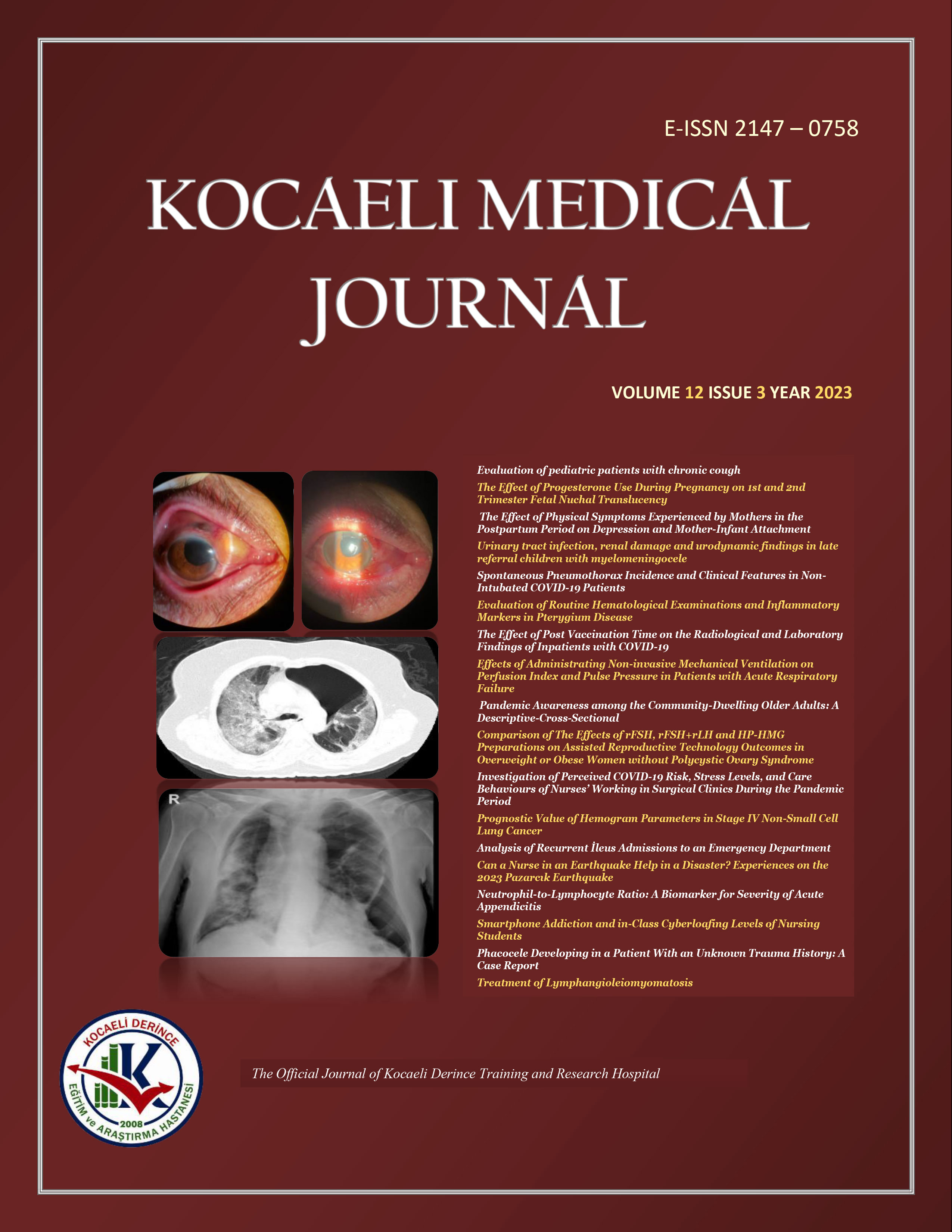
Investıgatıon Of Professıonal Commıtment Of The Newly Graduated Nurses
Sevgül Dönmez, Eylem KarakuşGaziantep University Faculty Of Health Sciences, Nursing Department, GaziantepINTRODUCTION: Professional commitment; a nurse is convinced that she believes in the values her profession has, that she is willing to work on it, is willing to develop, and is committed to pursuing this profession. This research was planned to examine the commitment to the profession of newly graduated nurses.
METHODS: This study was conducted as a descriptive study with 51 nurses who have been working Şahinbey Practice and Research Hospital between October 2017 and January 2018. The study was used "Information Form" and "Nursing Professional Commitment Scale" as data collection tool.
RESULTS: The average score of the Scale was found as 74.56 ± 10.43 (min = 49, max = 94), while the average of the subscale of effort was 35.74 ± 6.97 ( 21-50) and the subscale of maintaining the profession membership was 23.21 ± 4.73 (8-32) and belief subscale average of target and values was found to be 15.60 ± 2.13 (8-18). In addition, the average score of Nursing Professional Commitment Scale was found to be significantly higher in those who were 25-28 years old, in males, in weekly working hours, in surgical departments, in working with guide nurses and in the clinic for the first six months nurses and those who stated that the working environment affects themselves positively, and those who voluntarily choose their profession.
DISCUSSION AND CONCLUSION: it was determined that the commitment to the profession of the newly graduated nurses is moderate, job security, working conditions and team communication are important factors in the commitment to the profession.
Yeni Mezun Olan Hemşirelerin Mesleğe Bağlılıklarının İncelenmesi
Sevgül Dönmez, Eylem KarakuşGaziantep Üniversitesi Sağlık Bilimleri Fakültesi, Kadın Hastalıkları Ve Doğum Hemşireliği Anabilim Dalı, GaziantepGİRİŞ ve AMAÇ: Mesleğe bağlılık; bir hemşirenin mesleğinin sahip olduğu değerlerine inanması, bunun için çaba sarf etmesi, kendini geliştirmeye istekli olması ve bu mesleği sürdürme konusunda kararlı olmasıdır. Bu araştırma, yeni mezun olan hemşirelerin mesleğe bağlılıklarının incelenmesi amacıyla planlanmıştır.
YÖNTEM ve GEREÇLER: Bu araştırma, Ekim 2017Ocak 2018 tarihleri arasında, Şahinbey Uygulama ve Araştırma Hastanesi'nde çalışan 51 hemşire ile tanımlayıcı olarak yapılmıştır. Veri toplama aracı olarak, Tanılama Formu ve "Hemşirelerin Mesleğe Bağlılık Ölçeği" kullanılmıştır.
BULGULAR: Hemşirelikte Mesleğe Bağlılık Ölçeği toplam puan ortalaması 74.56±10.43 (min=49, max=94) olarak bulunurken, çaba gösterme istekliliği alt puan ortalaması 35.74±6.97 (min=21, max=50), meslek üyeliğini sürdürme alt puan ortalaması 23.21±4.73 (min=8, max=32), hedef ve değerlere inanç alt puan ortalaması ise 15.60±2.13 (min=8, max=18) olarak bulunmuştur. Ayrıca Mesleğe Bağlılık Ölçeği puan ortalaması 25-28 yaş aralığın da olanlarda, erkeklerde, haftalık çalışma saati daha az olanlarda, cerrahi birimlerde çalışanlarda, rehber hemşire ile çalışanlarda, kliniğe uyumlarındaki ilk altı ay için kendisini klinik sorumlusunun olumsuz etkilediğini ifade edenlerde, diğer hemşirelerin ve çalışma ortamının kendisini olumlu etkilediğini ifade edenlerde ve mesleği isteyerek seçenlerde daha yüksek bulunmuştur.
TARTIŞMA ve SONUÇ: Çalışmanın sonucunda yeni mezun hemşirelerin mesleğe bağlılıkların orta düzeyde olduğu, iş güvencesinin, çalışma koşullarının ve ekip iletişiminin mesleğe bağlılıkta önemli bir unsur olduğu belirlenmiştir.
Corresponding Author: Sevgül Dönmez, Türkiye
Manuscript Language: Turkish












